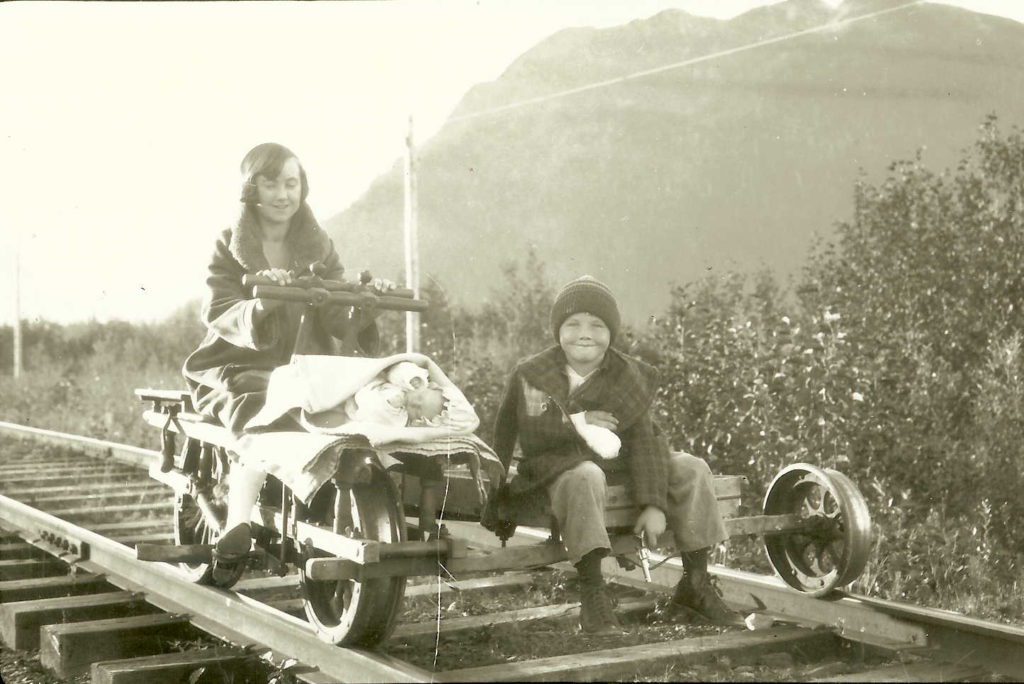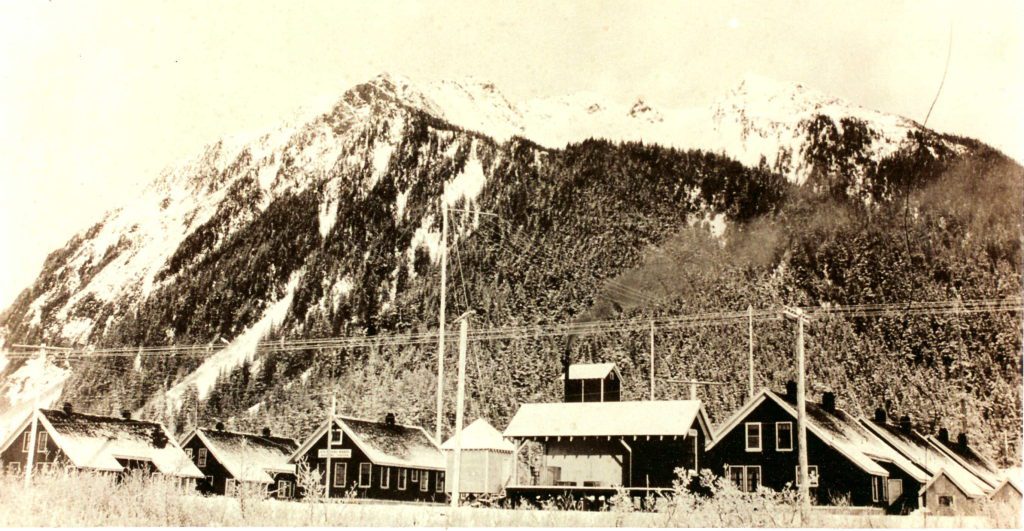At the Mile 7 Naval Radio Station throughout the 1920s improvements were made to the infrastructure support systems established in 1917. This included the industrial railroad, the sewer system, and the water distribution network.
Water was conveyed from a spring by a wood stave pipe 8,500 feet long, resting on a suspension bridge over Otter Creek via a trestle for distribution from the pumphouse to various station buildings. A wood trestle was also used to support the sewer pipe from the cesspool to an outlet on Otter Creek.
There was no road connecting the station either with Cordova or the Hanscom station and at the time the surrounding terrain was glacial moraine – swampy and impossible to traverse on foot.
The railroad offered the only connection with the outside world, either by running a handcar on its rails or by walking between the rails. The freight platform was constructed in 1919.
Mary Ferree Garwood grew up at the Mile 7 station along with her older brother John. In the stories of their lives there, she recounts that her mother took the railcar to town for her delivery.
The railroad charged the Navy a per trip fee for the use of its rails. Under such circumstances, the Navy and the inhabitants of Mile 7.5 pressed for construction of a road link to Cordova all through the 1920s, but the cost of such construction, estimated at one point at $450,000, prevented the realization of this dream.
When the transmitting facilities at the Hanscom station were moved to the Eyak station, a new powerhouse was constructed. This building was concrete with steel truss and wood beam roof supports and composition roofing. This included an engine room, a battery room, and a transmitter room. At the same time, 34 1,000-gallon and two 500-gallon steel tanks for fuel oil, gasoline and kerosene were placed on a concrete foundation.
Today, the remnants we see at Mile 7 are from the Alaska Department of Transportation facilities, but next time you drive out the road imagine the little community that once lived there!
















